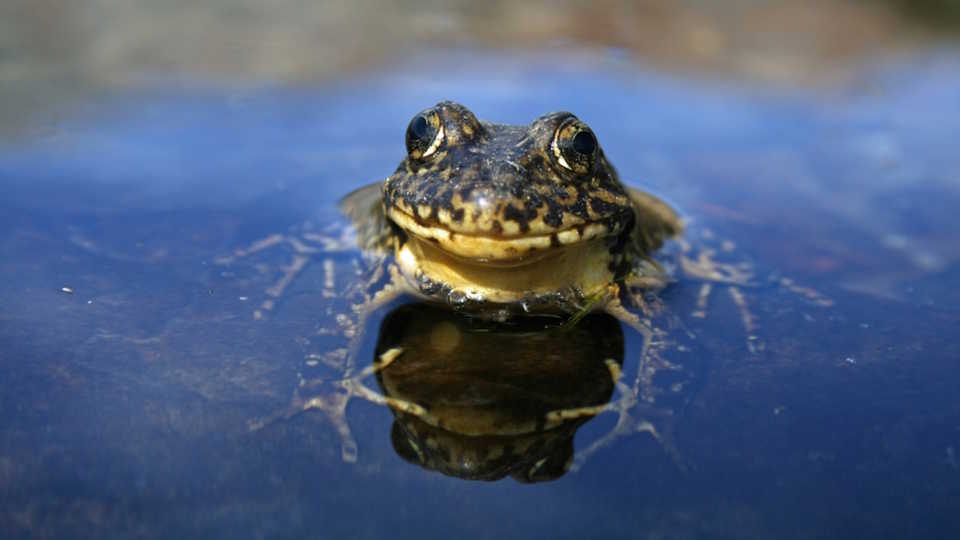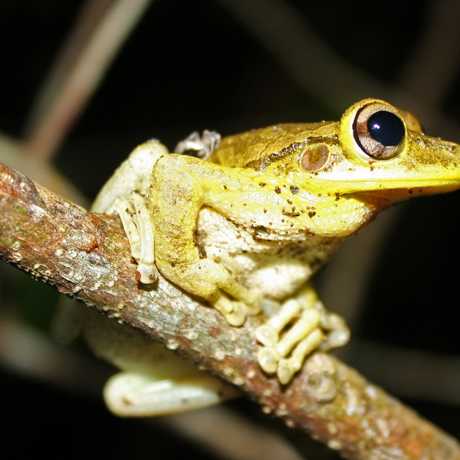Science News
Frog Recovery in Yosemite

This week brings good news for the endangered Sierra Nevada yellow-legged frog (Rana sierrae). After an exhaustive 20-year study, scientists have found that their populations have increased in Yosemite National Park, at a rate of about 11 percent per year. Researchers say that this isn’t just good news for the yellow-legged frog in California but for all amphibians worldwide.
As we reported in February, amphibians are in trouble, with more than 30 percent threatened by extinction. That’s a greater fraction than birds or mammals, mostly attributable to human impacts, including habitat destruction, invasive species, and introduced diseases. The Sierra Nevada yellow-legged frog is no exception. Within Yosemite, the frogs experienced steep declines in population due to the introduction of non-native fish and the spread of the chytrid fungus, Batrachochytrium dendrobatidis (Bd). According to the recent study, “A century ago, R. sierrae was one of the most abundant amphibians in lakes, ponds, meadows, and streams in California’s Sierra Nevada mountains, including in Yosemite National Park... Despite most of its range being highly protected, R. sierrae has disappeared from more than 93 percent of its historical distribution.”
To track their numbers, scientists from the U.S. Geological Survey and UC Santa Barbara (UCSB) conducted more than 7,000 frog population surveys in the park from 1993 to 2012. During that time, many of the lakes in Yosemite—which had been naturally fishless but were stocked with non-native trout for over 100 years since the late 1800s—became fishless once again. The researchers say this was one of the factors in the amphibian’s recovery.
To study another potential reason for recovery—resiliency to the disease Bd causes, known as chytridiomycosis—the team conducted a laboratory experiment led by Vance Vredenburg of San Francisco State University and Cheryl Briggs of UCSB.They found that frogs in Yosemite that have been exposed to the disease for decades are less susceptible than frogs from populations that are naïve to the disease. “This suggests that frogs have evolved at least partial resistance to the disease,” Vredenburg says. “That is a very hopeful finding.”
The team is unsure about how the frogs gain this reduced susceptibility. “We are working to identify those mechanisms,” Briggs says. “That information will be critical to recovery efforts not just for yellow-legged frogs but also for other amphibians worldwide that are endangered by chytridiomycosis.”
While “amphibian declines have been proven difficult to reverse,” the team writes in the new study, published yesterday in the Proceedings of the National Academy of Sciences, further work may give hints to potential recoveries elsewhere. The team suggests that in relatively intact habitat, amphibian adaptive responses in combination with appropriate management actions could help to reverse population decline in some amphibian species.
“We now have a parkwide picture of what’s happening in Yosemite, and it shows convincingly that these frog populations are increasing dramatically,” says lead author Roland Knapp, of UCSB’s Sierra Nevada Aquatic Research Laboratory in Mammoth Lakes. “These new results show that, given sufficient time and the availability of intact habitat, the frogs can recover despite the human-caused challenges they face.”
Image: Roland Knapp


